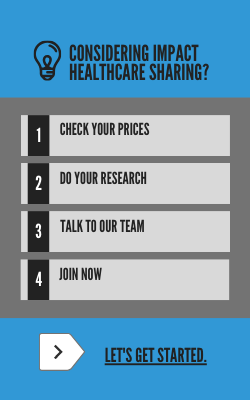-1.png?width=795&name=Untitled%20design%20(44)-1.png)
Why should I make an annual appointment with my primary doctor if I feel fine?
Annual health exams can be the best option when it comes to detecting and preventing illness. The American Medical Association suggests annual health exams every 5 years until the age of 40, unless already taking medications. In this case, follow your physician’s treatment and follow-up schedule. After the age of 40, every 1 to 3 years is recommended. However, if you have symptoms don’t wait, seek medical attention right away.
Choosing not to have an annual exam does not mean underlying issues are not present. Remember that ignoring something does not make it go away. Yet many of us are stubborn or hold out, making excuses that we don’t have the time, or we may think we’re fine, but the sobering reality is that abnormalities detected during annual exams can prevent you from having to walk down a long road of recovery.
What does an annual exam include?
- Blood pressure screening
- Cholesterol screening
- HIV screening
- Immunization vaccines
- Diabetes (Type 2) screening
- Obesity screening
- Breast cancer mammography
- Colorectal cancer screening
It is important to have a family health care provider that ensures the best medical care based on your individual needs. If you aren’t happy with your primary care physician, don’t hesitate to make the switch. Your health is important and you should be comfortable asking any questions to your provider.
Women have another set of reproductive health exams that are part of annual preventative care exams. Some women may see their primary care physicians for these exams, but that is not a requirement. Women can choose to see specialists in women’s health. Either way, the tests are critical to optimal health.
Suggested exams for reproductive health include:
- Breast exam. Your doctor will both visually and physically perform an exam to rule out any lumps, bumps, or skin abnormalities that could indicate breast cancer or non-threatening breast issues.
- Mammogram. Mammograms typically begin after age 40. This exam provides imaging of the breast tissue and is used to detect breast cancer. Mammograms can detect cancer early—when most treatable. Many facilities offer free or reduced exams. Search by zip code here.
- Pelvic exam. This exam is done by the physician checking for any abnormality. While this exam may cause pressure and some discomfort, it should not be painful. Let your physician know immediately if it’s painful.
- Pap and HPV tests. These screenings can indicate the presence of cervical cancer and help assess risk. Your doctor will insert a sterile swab and gently scrape your cervix to obtain a cell sample for analysis. The CDC states, “Cervical cancer used to be the leading cause of cancer death for women in the United States. However, in the past 40 years, the number of cases of cervical cancer and the number of deaths from cervical cancer have decreased significantly. This decline largely is the result of many women getting regular Pap tests, which can find cervical precancer before it turns into cancer.” So, don’t skip this important screening.
-1.png?width=795&name=Untitled%20design%20(45)-1.png)
Remember, the goal of prevention and health promotion is to reduce the burden of suffering a preventable disease.
With the cost of healthcare rising every year it can be easy to skip these important exams. But don’t let the cost scare you, many places offer great discounts when you choose self-pay. Your local Health Department may even offer these for free, or at a very low cost.
Impact follows the American Cancer Society recommendations when it comes to Sharing in Preventative Care, which includes the following:
Women
- Pap test - one every three years from 21-65 yrs.
- Mammogram - Age 45-54 yearly, every two years starting at age 55.
Men
- PSA test - one every 10 years starting at age 50.
All
- Colonoscopy - one every 10 years starting at age 50, or one every five years for members at high risk.
If you are wondering what to do if your provider has not heard of Impact Health Sharing or says they will not accept it follow these details instructions.
Contact us today if you’d like to learn more about what Impact has to offer and how you can start saving money on your health care!
Healthy citizens are the greatest asset any country can have.
– Winston S. Churchill


